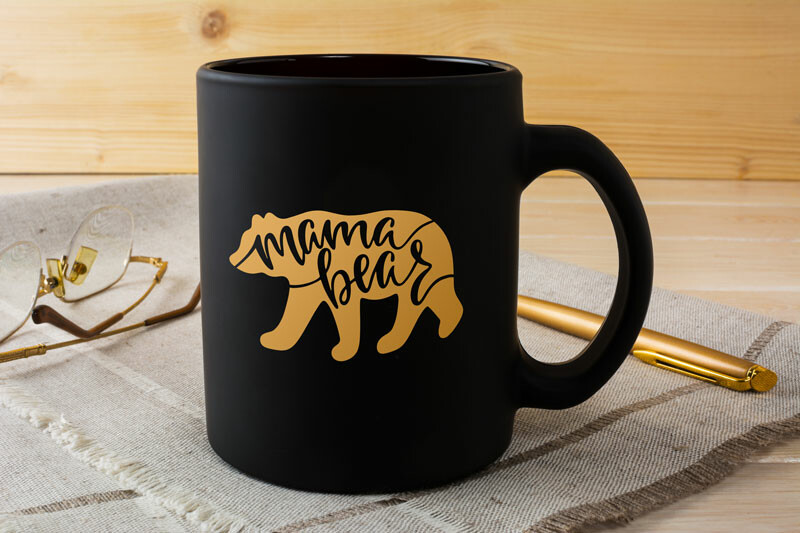
Product Spotlight: Promotional Mugs
Custom Mugs have a distinguished history.
Rick Cundiff
Lots of us start our day with a nice hot cup of coffee or tea. Holding the mug in our hands, cupping it to feel its warmth, inhaling the aroma, is simply sublime.
And chances are, if you are a regular drinker of coffee or tea, you’re kinda particular about your cup. Who doesn’t have a favorite mug?
The coffee mug as we know it today has a storied history, dating back thousands (!) of years. In recent decades, they’ve become a reliable promotional product as well. Let’s look at the history of mugs and how they’ve evolved over the millennia.
In the Beginning
Pre-Mug: Wood, Bone and Skulls
Obviously, people have been drinking water and other liquids since the dawn of time. But how did they do so before mugs came along?
The earliest drinking vessels discovered date to about 12,000 years ago. Ancient peoples in what are now China and Japan painstakingly carved vessels from bone or wood. Evidence suggests that if nothing suitable was available, drinking from an animal skull was socially acceptable, even at the finest dinner parties.
A Feat of Clay
Somewhat later, humans learned how to create pottery. Clay drinking vessels were now possible. They could even be decorated with unique designs! But as a drinking device, their thick rims and typical lack of handles were less than ideal.
Heavy Metal (Poisoning?)
Around 2000 BCE, metal mugs came to be. Artisans crafted mugs from several metals, including bronze, silver, gold and lead.
Like their predecessors, these mugs had their drawbacks. For starters, they tended to get hot very quickly, risking burns for the user. And of course, there was that little problem of lead poisoning. That tended to limit the market for lead mugs.
Meanwhile, In China …
Chinese artisans worked with glass-like materials for a thousand years or so, and by about 600 A.D., had perfected porcelain. This turned out to be an ideal material for drinking mugs. It was durable, heat resistant, could have molded handles, and could be made thin enough to comfortably hold and drink from. Porcelain mugs and other items quickly became known as “china.” They became the de facto standard drinking vessel for coffee, tea and other hot liquids.
The timing was fortunate, for about 250 years later, farmers along the Red Sea discovered coffee. First popularized in the Arab world, coffee later spread to Europe and the rest of the globe. Muslims in the Middle East originated the coffee house, a gathering place where men could discuss events and ideas without alcohol being present.
And of course, we all know what coffee houses led to – beatniks, folk music and eventually saying tall, grande or venti when we mean small, medium or large.
A Victor in Diner Culture
You know that basic white porcelain mug that’s present in just about every diner you’ve ever seen? That simple design, not too heavy, not too thick, comfortable D handle? Of course you do.

Believe it or not, you can thank the U.S. Navy and a company that makes porcelain electrical insulators for that timeless wonder.
The Victor Insulator Company, of Victor, New York, opened its doors in 1893, producing insulators for the new electrical industry. By the 1940s, the company was a leading producer of such products.
In World War II, the Navy put out a bid for coffee mugs that could withstand the rigors of shipboard use. Victor won the contract.
The company designed and made the classic mug – round, with concave walls and an unfinished bottom to help prevent sliding – without the later D-shaped handle.
After the war, company leaders decided to keep producing the mugs for civilian restaurants, adding the handle. The mugs proved durable, cost-effective and popular. By the 1950s and ‘60s, they were in restaurants and diners just about everywhere.
The company was able to print the names of restaurants on the mugs, creating what arguably could be called the first promotional mugs. Unfortunately, by the late 1980s, foreign competitors were able to produce the same style mug at a lower cost.
In 1987, Victor Insulators shut down their mug production line to focus entirely on their core electrical products. But there are still plenty of mugs out there bearing that iconic style. Just check out your nearest local diner.
The ‘80s and Beyond: Promo Mugs Come of Age
By the 1980s, promotional mugs began to appear on the scene. Custom imprints became popular as a way to promote businesses, schools and even nonprofit groups.
Since then, custom mugs have popped up just about everywhere. They’re a time-tested way to promote coffee shops, tea brands, construction companies, and many other businesses. Universities offer alumni mugs with the school mascot or logo on them.
Fundraising with mugs is easy too. Nonprofits from public radio stations to Doctors Without Borders have adopted custom printed mugs as fundraising rewards for donors. They’re a way to show you support an organization in a low-key yet visible way.

As with so many everyday products, we take mugs for granted. But next time you’re enjoying your favorite coffee, tea or cocoa, take a second to look at the vessel you’re drinking from. It truly deserves a shot.
Rick Cundiff
Content Director, Blogger
Rick Cundiff spent 15 years as a newspaper journalist before joining TJM Promos. He has been researching and writing about promotional products for more than 10 years. He believes in the Oxford comma, eradicating the word "utilize," and Santa Claus.
